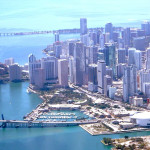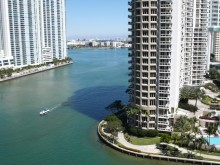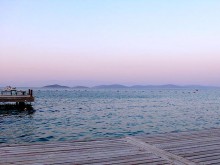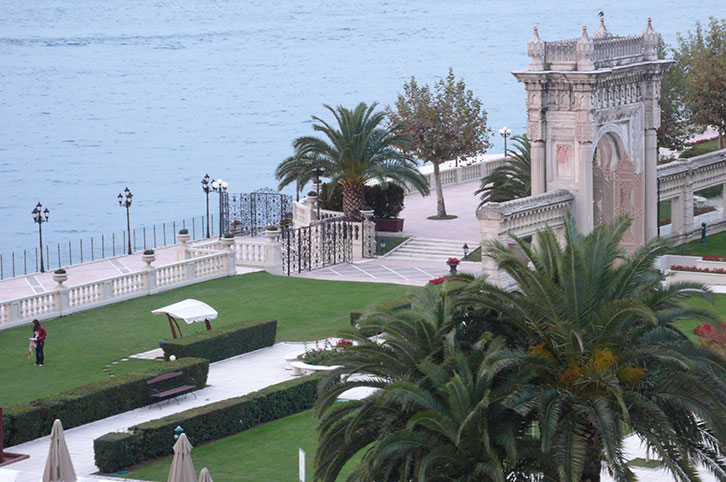
“What happened to your head?” someone asked me on the plane heading home from Turkey. I’d been waiting for the question – after all, it was a rather rude red mark atop my forehead – and now, at last, I could answer, “I hit it on a yacht while sailing on the Bosphorus.”
The Bosphorus. The name alone conjures up images of romance and mystery, scenes of intrigue and indolence and indulgence. Lined with Ottoman palaces and Italianate villas and imperial mosques, the Bosphorus is the strait that connects the Black Sea to the Mediterranean and, thereby, one of the busiest seaways in the world. Less the dividing line between Europe and Asia, the Bosphorus serves as the connection between two continents – and two sides of one great city.
Years ago, as an adolescent, I read a paperback novel about characters who lived and loved in Istanbul, which they referred to as Byzantium and which served as a playground for their trysts and dalliances and which was rendered particularly magical and seductive to an adolescent yearning to see the world.
As I cruised down the Bosphorus on a recent sunny autumn afternoon, I thought again of that novel – and also of JFK, Jr. and his new wife Carolyn Bessette who honeymooned in Istanbul in 1996. It was JFK, Jr.’s mother, Jackie, who had returned to Turkey in 1985 and recommended Istanbul for a honeymoon – and the two newlyweds had ensconced themselves in the Sultan’s Suite atop the Ciragan Palace Hotel along the European side of the Bosphorus.
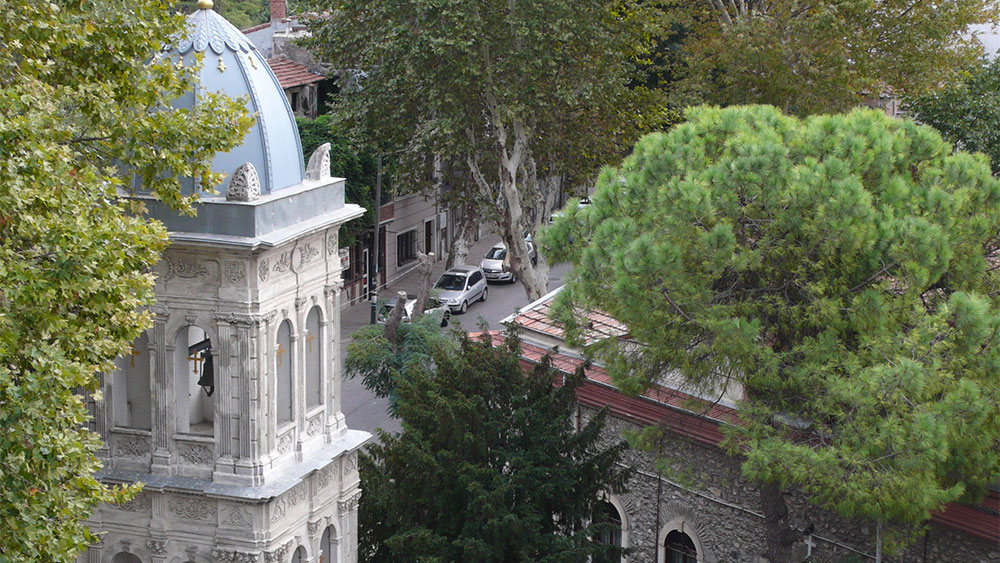
A walking tour through Kuzguncuk (meaning “little raven” in Turkish) on Istanbul’s Asian side reveals a serene neighborhood filled with artists and architects. (Source:MRNY)
Madonna stayed there, too, in the same palatial suite, telling the staff that no one was to have a key to her rooms – except for her boyfriend. Originally built in the late 19th century as a sultan’s palace, the Ciragan Palace was reopened in 1992 after a checkered history that included a massive fire, as well as stints serving as the headquarters for the French military during World War I and the practice grounds for the Turkish football team.
A city of myriad layers, Istanbul has been the capital of four empires (Roman, Byzantine, Latin, and Ottoman), thanks in good part to its strategic locale. What was once an ancient Greek city called Byzantion, and later Nova Roma, though more popularly known as Constantinople, Istanbul is the world’s only city that encompasses two continents. The city is surrounded by water: not only the Bosphorus bisecting its two sides, but also the Marmara Sea to the south and the Golden Horn, a narrow inlet that divides the European side of Istanbul.
To stand in Sultanahmet Square, home to the Hagia Sophia and the Blue Mosque, the two most recognizable icons of Istanbul, is to see also the silhouettes of the obelisks from the Hippodrome of Constantinople – and to be reminded not only of chariot races but also of the passage of empires and time.
With a population of more than 13 million, the city of Istanbul, Turkey’s largest, is almost twice as populated as New York, with an area nearly seven times as large as all five New York City boroughs. A walking tour through Kuzguncuk (meaning “little raven” in Turkish) on Istanbul’s Asian side reveals a serene neighborhood filled with artists and architects and a pace of life more in keeping with Williamsburg than Manhattan. Men park themselves at tables on the sidewalk, playing checkers and sipping tea in the morning sun. Narrow streets are lined with wooden houses juxtaposed with stately mansions and vegetable gardens. At one point, we attract the attention of a trio of dogs who follow us, dutifully waiting in front of the shops and boutiques we visit. All morning, the dogs pad alongside us, attracting more dogs, until we are leading eight loyal canines through the hilly cobblestoned streets.
As the economic and cultural heart of Turkey, Istanbul is the world’s tenth most popular destination. A center of arts and fashion, culture and history, with a median age of 23, Istanbul is also a university town with more than 150,000 students – and the goal of the recent inaugural Istanbul Design Biennial is to position the city as a global design capital.
This, after all, is the city that was the world’s wealthiest at a time when Paris and London were little more than sleepy backwaters – and it was Napoleon who was reputed to have remarked that “if the earth were a single state, Istanbul would be its capital.” Today, the city is home to more than thirty billionaires, making Istanbul the fifth most popular refuge for excessive wealth.
But then, what else could be expected from a town that created the world’s largest covered bazaar with more than 4,000 shops in 1461? Today, the Grand Bazaar is as exhilarating and dynamic as the city’s population. “Life is short; spend all your money,” counsels one merchant as we enter. Another calls out, “I want to see you.”
As the only secular Muslim state, Turkey is a study of contrasts. Five times a day, the call to prayer echoes throughout the city of Istanbul, even as the young and beautiful head off to shop and drink and party throughout the night. The great Greek poet Constantine P. Cavafy (whose parents were from Istanbul and who spent three years in the city before returning to Alexandria) must’ve appreciated the unabashed physicality of young Turkish males, their arms around each other, holding hands as they lean in close, laughing at something only the two of them share.
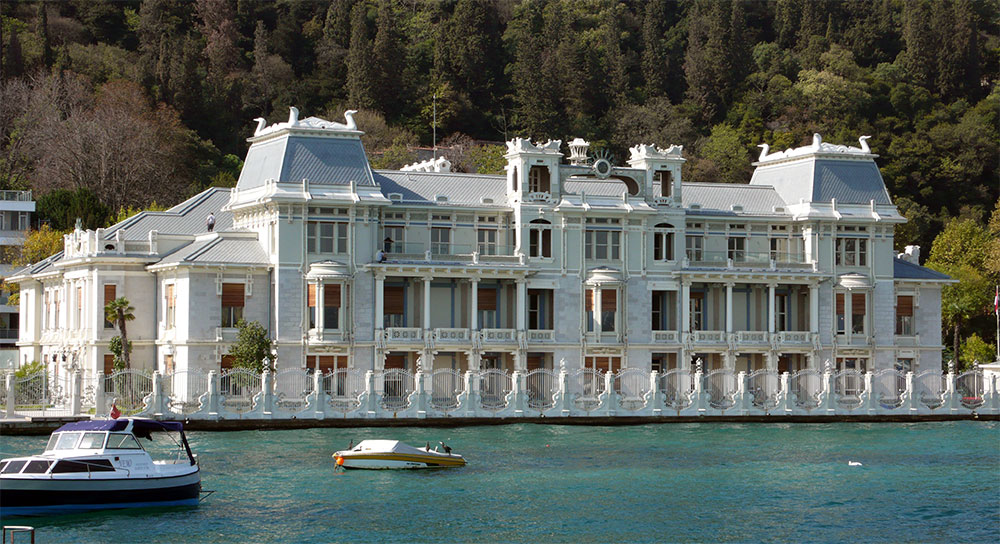
At least 26 of the 36 sultans of the Ottoman Dynasty were poets. (Source:MRNY)
For those of us from the States, Istanbul has, for so long, represented the magical allure of the unknown: the bridge from our Occidental history into the otherworldliness of the Orient. Located at the nexus of human history, the 2,000-year-old city is a sprawling 700-square-mile metropolis studded with nearly 20,000 cultural sites that span the breadth of human civilization – from the city’s nearly 1,000-year reign as the center of Christendom to its role as the Muslim caliphate for another 500 years.
While Turkey is a secular state with no official state religion, nearly 99% of the population of Istanbul, like the rest of Turkey, is Muslim. That fact, however, does not preclude the existence of numerous LGBT bars and nightclubs, some with backrooms and some for all-night dancing to the sounds of some of nightlife’s most renowned international deejays. A plethora of nightlife options is available for the LGBT community including transgender parties and parties for Turkish bears and barely-legal rent boys. As with all great cities, if you seek it out, you’ll find it.
It’s worth remembering that at least 26 of the 36 sultans of the Ottoman Dynasty were poets – and that the royal households practiced painting, woodworking, writing poetry, and many other forms of art. In other words, the world’s only city that straddles two continents serves to remind us how interconnected we are. The Bosphorus Bridge, built in 1973 as the world’s first transcontinental bridge, serves as a beacon of our interconnectedness in the face of cartographers’ boundaries and demarcations.
Currently, two suspension bridges span the Bosphorus, connecting Europe to Asia, with a third one planned. Arguably, the symbolism of the bridges is as meaningful as their practical import, for it isn’t long after arriving in Istanbul that you recognize that the mystery and mysticism you might have been anticipating gives way to a dawning awareness of commonality. We are all seeking the same: striving for happiness and peace of mind.
One enchanted evening, I stood on a terrace at the Ciragan Palace, a glass of Champagne in my hand. The lights of the Bosphorus Bridge were blinking blue and shining bright. Below me, people walked arm in arm through the landscaped gardens and beneath the immense historic gates. “Sir, is there anything I can do for you?” asked a server in the most gentle and sincere voice. Shaking my head, I turned to him and smiled as I raised my glass: to the Bosphorus, to Istanbul, to one the world’s most beautiful cities.
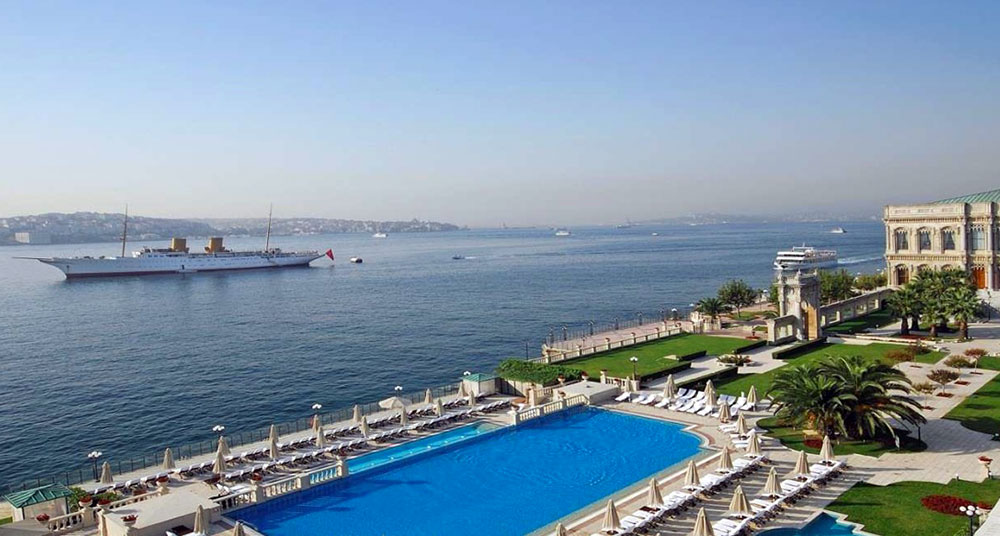
As soon as you enter the five-star Ciragan Palace Kempinski you enter into a world marked by Ottoman elegance. (Source:Ciragan Palace Kempinski)
Ciragan Palace Kempinski: Whether you arrive by yacht, helicopter, limousine, or Maybach (all of which are available to guests), as soon as you enter the five-star Ciragan Palace Kempinski you enter into a world marked by Ottoman elegance.
Built in the late 19th century, the original Ciragan Palace was renovated again in 2007, so that the 11 suites in the historic palace evoke the original baroque style – and so that the likes of Madonna, Liza, Oprah, Sting, Fergie, and just about every other boldface celebrity who has been in residence can wash their toesies beneath the gold-plated taps in the massive private hamam of the Sultan’s Suite.
Located on the European shores of the Bosphorus, the Ciragan Palace Kempinski Hotel opened in 1990 with 313 rooms and 20 suites. With its superb waterfront location and landscaped gardens with palm trees, the hotel exudes the ambiance of an enchanted private resort.
A high wall at the hotel’s front entrance fosters a sense of distance from the great city, enabling guests to wander the palace grounds as if they were members of a royal household.
Guest rooms are capacious, with terraces that overlook the Bosphorus and make for a perfect perch at gloaming as the sky turns rosy pink with the sunset. A pillow menu offers six choices, including buckwheat, and WiFi is complimentary as is a daily newspaper. Breakfast is served at Laledan Restaurant overlooking the palm garden and includes a sultan’s feast of more than 300 choices, nearly all of them organic. Honey is served in the comb and the cornucopia of juices and smoothies would make Jamba Juice jealous.
There’s incredible attention to detail at The Ciragan Palace including nightly gifts and sweets, which might be Turkish delight or macaroons or truffles. Cross pens accompany monogrammed notepads and the robes are luxuriant. A morning wake-up call includes morning coffee on a silver tray, brought to your room by a uniformed valet.
In the evenings, when night has fallen, take a swim in the infinity pool and gaze at the stars above the Bosphorus – and be grateful that the Ottoman sultans had such exquisite taste.
LINK: Ciragan Palace Kempinski
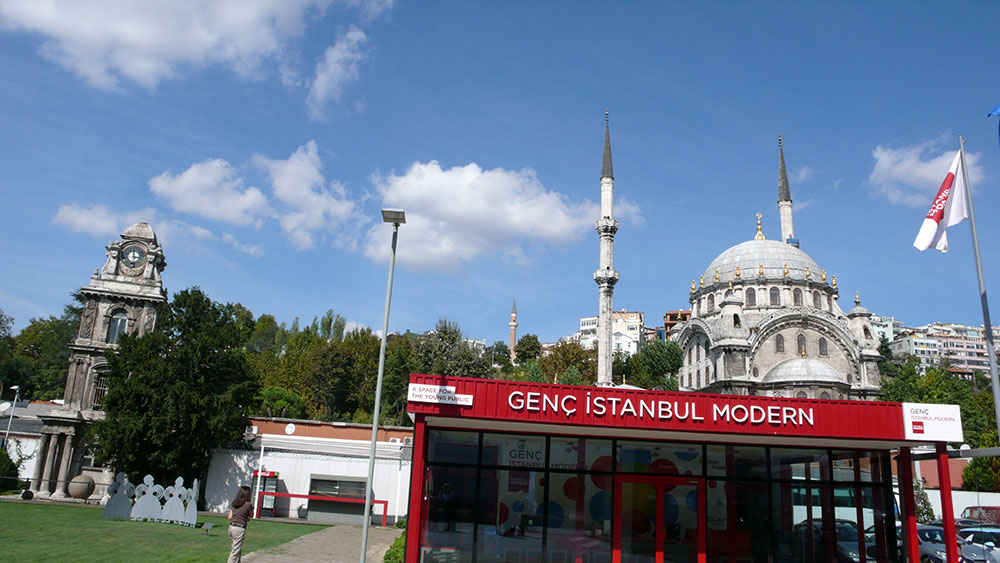
Istanbul’s inaugural design biennial was held from 13 October through 12 December 2012. (Source:MRNY)
Istanbul Design Biennial: With the goal of transforming Istanbul into a premier design destination, the inaugural Istanbul Design Biennial offered over 100 projects from 200 designers who came from 46 countries in the fields of urban design, fashion design, architecture, industrial design, graphic design, and new media design.
The theme for the first edition of the Biennial was “Imperfection,” with artists reflecting upon a world moving beyond mass production and the multiple nuances inherent in the notion of imperfection.
Exhibitions were located at the Istanbul Modern and Galata Private Greek School and included an Yves Klein blue Urban Living Room located just outside the Istanbul Modern – for pondering what you’d just witnessed.
Istanbul’s inaugural design biennial was held from 13 October through 12 December 2012.
LINK: Istanbul Design Biennial
Walking Tour of Kuzguncuk: On the Asian side of the Bosphorus, the city of Istanbul more closely resembles a series of residential neighborhoods and one of the most alluring is Kuzguncuk, the habitat of numerous artists, architects, and academics. A walking tour through the narrow cobblestoned streets reveals wooden houses, synagogues, and vegetable gardens, as well as small galleries and ateliers.
Kuzguncuk recalls the Istanbul experienced in many of Orhan Pamuk’s novels and memoirs (although an actual “Museum of Innocence,” a museum based on Pamuk’s eponymous novel is located across the water in Beyoglu).
Time in Kuzguncuk seems to have slowed to a more amiable pace than much of the rest of this great city; it’s no wonder that so many creative types prefer to work in this neighborhood and claim it as home.
Grand Bazaar: More than 300,000 shoppers arrive daily at one of the world’s largest and oldest covered markets. Built in 1461, the Grand Bazaar has over 3,000 shops in 61 covered streets entered from 22 massive gates. A feast for the senses and a shopper’s paradise, the Grand Bazaar is also a kaleidoscopic perspective on the quotidian life of Istanbul.
LINK: Grand Bazaar
Private Cruise Along the Bosphorus: If you’re looking for romance, then you can’t go wrong with a cruise along the Bosphorus. Whether you’re taking a private yacht or partaking of a group cruise, you’ll fall in love along the Bosphorus as you cruise by Italianate villas and Ottoman palaces and mosques and private homes. The city of Istanbul faces onto the water and as you cruise down the Bosphorus, it’s as if you’re seeing Istanbul in its best light.
No wonder the Bosphorus is one of the busiest waterways in the world: everyone wants to fall in love all over again.
LINK: Bosphorus Cruise
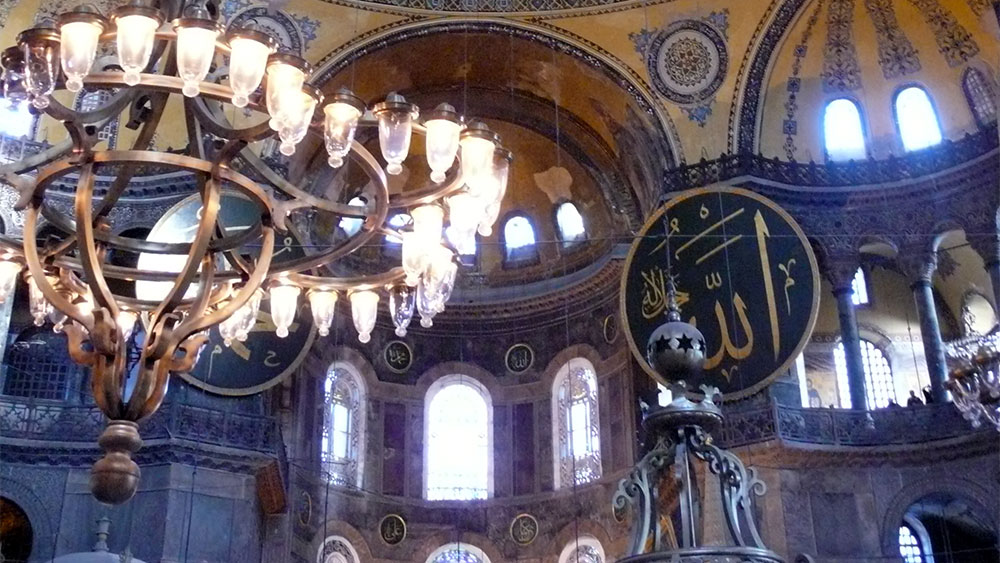
The world’s largest cathedral for more than a thousand years, the building became a mosque in 1453. (Source:MRNY)
Hagia Sophia: Built in the 6th century as an Orthodox basilica with its massive dome, this is the building that changed the history of architecture. The world’s largest cathedral for more than a thousand years, the building became a mosque in 1453 – and a museum in 1935. One of the world’s greatest examples of Byzantine architecture, the Hagia Sophia has survived earthquakes as well as an escalating number of tourists.
LINK: Hagia Sophia
Blue Mosque: Off with your shoes before you enter. Be prepared to gape – not only at the crowds of tourists and worshippers but also at the stunning blue tiles that dominate the interior of what is officially known as the Sultan Ahmed Mosque.
LOCATION: Sultanahmet Square
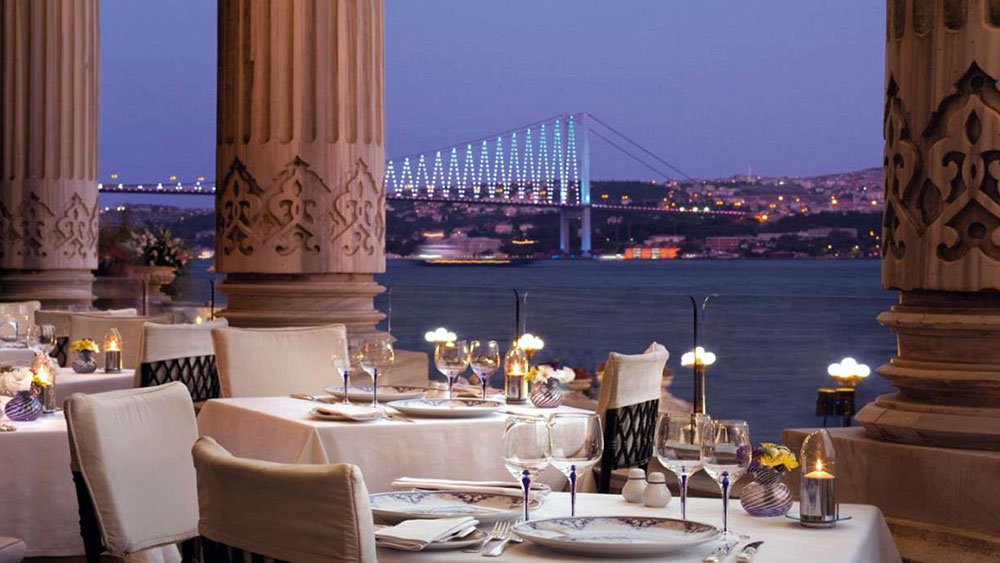
One of the most romantic locations in the world, Tugra Restaurant is located on the first floor of the historic Ciragan Palace. (Source:Ciragan Palace Kempinski)
WHERE TO EAT:
Tugra, Ciragan Palace: One of the most romantic locations in the world, Tugra Restaurant is located on the first floor of the historic Ciragan Palace with breathtaking views of the Bosphorus. If you dine on the terrace at sunset at a table situated between the Ottoman palace’s massive columns, then it’s likely that you’ll be spoiled for any other restaurant the world over.
With a view overlooking Asia, the floor to ceiling windows of the main dining room are framed by velvet curtains and the room’s sumptuous furnishings reflect the elegance of the Ottoman Empire.
Tugra’s menu features traditional Ottoman cuisine such as grilled sea bass in vine leaves, chicken Topkapi, and a dessert trolley laden with baklava, puddings, and silver bowls of clotted cream. Turkish chef Ahmet Kara utilizes organic ingredients from Anatolia, Thrace, and the Aegean and Black Sea regions.
The winner of numerous culinary awards, Tugra earns its name, which means “the signature of the Sultan” and which testifies to the gastronomic glories of the Ottoman Empire.
LINK: Tugra Restaurant at Ciragan Palace
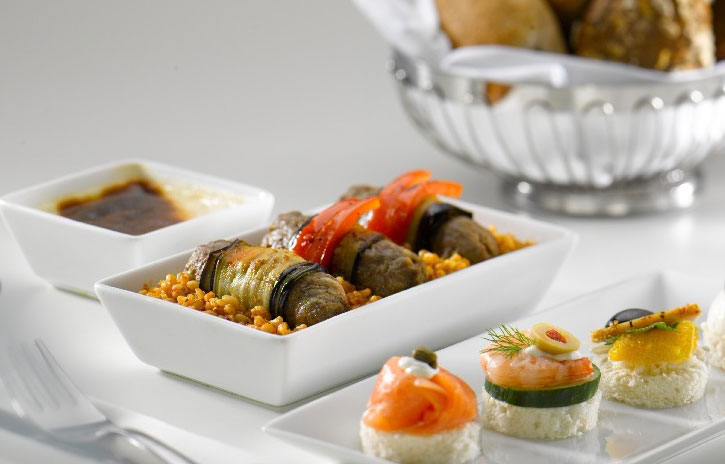
Meals in Comfort Class are served on porcelain china, with stainless steel cutlery and linen napkins. (Source:Turkish Airlines)
Turkish Airlines: Traveling to Istanbul on Turkish Airlines makes you yearn for a state-owned airlines in the United States. Alongside the stewards waiting to greet you as you enter the plane is the chef in full whites – and right away you realize that this isn’t going to be one of those boxed meal flights.
Traveling Comfort Class on Turkish Airlines is the equivalent of an eight-hour vacation in the sky. Passengers are welcomed with aperitifs and Turkish mezzes, as well as hazelnuts. You sink into your plush leather seat with a sigh of relief. All seats in Comfort Class offer a 46-inch seat pitch, with a 19.5-inch seat cushion. Comfort Class seats fully recline, with adjustable leg rests and personal 10.6-inch entertainment monitors that offer more than 400 entertainment options.
Meals in Comfort Class are served on porcelain china, with stainless steel cutlery and linen napkins. A recent international flight featured menu options such as a potpourri of mezze, green salad with tomatoes and Parmesan, grilled fillet of salmon with potato puree and fried zucchini, cheeses and fresh fruit, and homemade apple strudel with whipped cream. And in a nod to Turkish hospitality, the chef reappears, offering his passengers a selection from a fresh bread basket. Breakfast includes a tomato and cheese omelette with fresh fruit salad.
Employees on Turkish Airlines are as gracious as Emily Post would have wished for and after a flight on Turkish Airlines, you understand why Skytrax awarded them “Best Airline in Europe” for 2012.
LINK: Turkish Airlines
ADDITIONAL INFORMATION:


